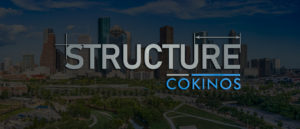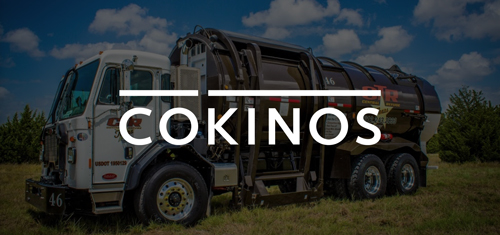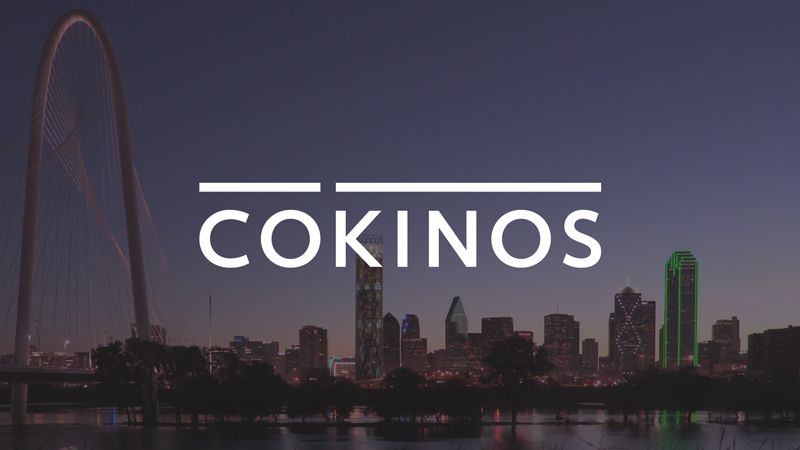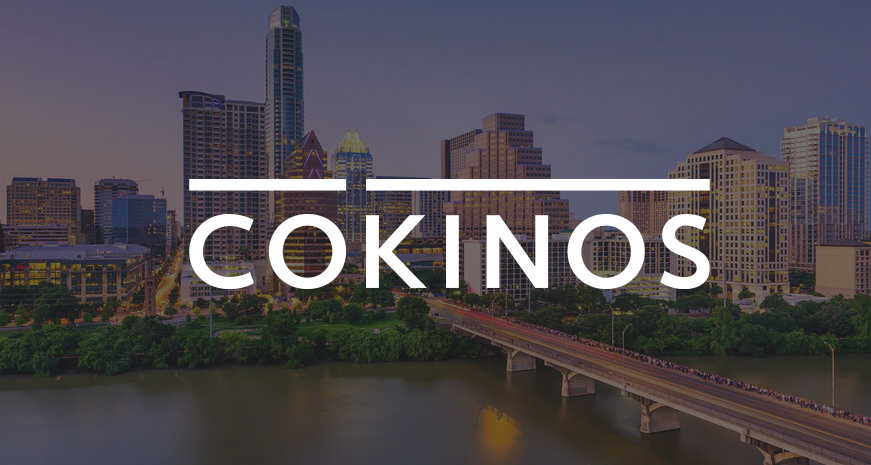
A Cokinos|Young Informational Update
Following up on our recent bulletin focusing on force majeure and project delay, which may be found at https://www.cokinoslaw.com/covid-19-and-force-majuere/, this update provides more specific information regarding the treatment of force majeure clauses in Texas. Handling of these issues may vary in other jurisdictions, but most concepts are relatively common and should be in the minds of all construction industry participants as the novel coronavirus continues to threaten the stability and prosecution of construction projects worldwide.
The Need for Strong Contract Controls
At this point, it is clear the novel coronavirus outbreak will disrupt all sectors of the construction industry. Reports of slowdown in the industry are increasing across Texas and the rest of the country. What began as an emerging health crisis in a single country has developed into a worldwide pandemic, and construction professionals are now faced with the question of who will be responsible for the impacts caused by project delays, material and labor shortages, and potential spread of the new virus on construction projects around the country.
Construction contracts, at their core, are risk-shifting devices intended to address these kinds of questions. Texas, like all jurisdictions in the United States, recognizes the primacy of the right to contract and the wisdom of allowing commercial parties to apportion risk however they choose. Optimally, parties to a contract will use this ability to assign each particular risk to the party with the greatest ability to mitigate or protect against that risk. Doing so clearly and with sufficient detail decreases the odds of disputes arising between the parties and also decreases the risk of a court imposing its own assessment of the risk in litigation.
Shifting the Risk of Delay
As discussed in our force majeure bulletin, project delay is one of the primary concerns arising from the spread of COVID-19. In the construction industry, remaining on schedule is critical. There are few projects where timeliness of completion is not a material concern, and project owners may face substantial economic damage in the event their project is incomplete as of the date scheduled for completion. From the contractor’s perspective, both profits and availability of materials and labor can be dramatically impacted by unexpected delays the schedule and, perhaps more importantly, significant liability for delay damages can accrue—often in the form of liquidated damages.
The spread of the novel coronavirus poses a clear and immediate threat to timely completion of construction projects. As more and more states issue mandatory lockdown orders and local governments further restrict the operation of businesses, it is likely many projects will be forced to suspend work entirely. Liability associated with resulting delays will be determined by the strength of the parties’ contract. Specifically, does the contract account for unexpected delays and assign that risk to a particular party? If so, does the coronavirus pandemic meet the contract’s definition of an unexpected delay? The answers to these questions will play an integral role in allocating the cost and liability for the delay.
Because project delays are such a critical risk, most construction professionals will already be familiar with the concept of “force majeure.” Put simply, a force majeure clause excuses performance obligations, or extends time of performance, when an unforeseeable or uncontrollable event results in project delay. Most force majeure clauses define the specific types of events that will qualify as force majeure, though some contracts take a broader approach and utilize undefined, “catch-all” language. The most robust clauses often employ both approaches. The list of defined causes generally includes tornados, lightning, floods, fires, earthquakes, droughts, strikes, lockouts, riots, wars, explosions, sabotage, epidemics, and governmental acts.
Some force majeure clauses may not even use the term “force majeure.” Use of the term is not necessary, but almost all construction contracts incorporate the concept in some way. The American Institute of Architects’ “AIA A201 – General Conditions of the Contract for Construction,” for example, uses the following language:
“If the Contractor is delayed at any time in the commencement or progress of the Work by … an act or neglect of the Owner or Architect, of an employee of either, or of a Separate Contractor … by labor disputes, fire, unusual delay in deliveries, unavoidable casualties, adverse weather conditions … or other causes beyond the Contractor’s control … then the Contract Time shall be extended for such reasonable time as the Architect may determine.”
Treatment of Force Majeure by Texas Courts
Force majeure clauses are valid and enforceable in Texas, and they are strictly construed by courts. In other words, if a given event qualifies as “force majeure” pursuant to the terms of the contract, the contractual language will control allocation of liability arising from that event. If there are uncertainties left by the contract language, some common law doctrines may operate to fill the gaps (as discussed below), but clearly defined contract language will reign supreme, and the courts will not re-rewrite the contract or interpret it in a manner inconsistent with the stated intent of the parties.
When a party raises a force majeure clause as a defense for non-performance of its obligations under the contract, that party bears the burden of proof to establish the defense. If that party can prove the alleged uncontrollable circumstance meets the definition of force majeure set forth in the contract, non-performance will be excused, generally for as long as the circumstances affecting performance continue. Importantly, the claimed force majeure event must be the actual cause of the party’s non-performance. If, for example, it was unlikely the party could have timely performed, even if the event had not occurred, the force majeure defense will be weakened and likely unsuccessful.
Is a Pandemic a Force Majeure Event?
Unfortunately, there is not extensive published case law in Texas, or the United States, involving disease outbreaks. For that reason, the question of whether a particular disease outbreak constitutes a force majeure event will turn on the language used in the contract at issue. While most contracts in force when COVID-19 became a worldwide concern are likely to include some variety of force majeure language, clauses specifically mentioning epidemics and/or pandemics will offer the best protection. Texas courts strictly construe force majeure provisions, so they may be less inclined to grant relief where the force majeure provision uses vague language and does not specifically reference the cause of the delay or non-performance.
The most compelling claim of force majeure caused by the Coronavirus outbreak will be found in construction contracts that specifically identify “disease,” “epidemic,” or “pandemic” in the definition of a force majeure event. If the parties unambiguously allocate the risk of the specified event, there will be no room for a court to inquire into the foreseeability of the event. The following excerpt is a good example:
“As used herein, “Force Majeure Event” includes, but is not limited to, acts of government, acts of God, war, rebellion, strikes or lockouts, epidemics or health crises, landslides, lightning, earthquakes, fires, named tropical storms…”
Though less preferred, more general language may also be sufficient to encompass the current pandemic, especially due to the fact the “unforeseeability” of the event—at least with respect to contracts executed prior to January 2020—is difficult to argue. These more general clauses may include events arising from “acts of God,” “any other unforeseen event,” or “any other cause beyond the affected party’s control.” Moreover, if the quarantines, travel restrictions, and lockdowns put into place by government authorities render a party unable to perform, they may also constitute an “act of government” excusing performance.
Contracting parties should keep in mind, however, reliance on generic or vague provisions increases the likelihood a court will impose additional considerations when interpreting the clause. Furthermore, now that spread of the novel coronavirus, and its probable impact on the construction industry, is widely known, diligent professionals will include very specific language in their force majeure provisions to address unquantifiable risks from a known threat. For example, the prior excerpt could be strengthened further:
“As used herein, “Force Majeure Event” includes, but is not limited to, acts of government, acts of God, war, rebellion, strikes or lockouts, epidemics or health crises (whether arising from known or unknown pathogens), landslides, lightning, earthquakes, fires, named tropical storms…”
There is also nothing stopping contracting parties from specifically mentioning the novel coronavirus or COVID-19 and identifying it as a circumstance qualifying as “force majeure.”
What if my Contract Doesn’t Mention Epidemics or Pandemics?
When the precise wording of a force majeure clause does not include the specific circumstance being invoked as force majeure, Texas courts will look to the more general language used and impose additional restrictions. As noted above, many contracts include catch-all provisions like “any other event outside of a party’s control” or “any unforeseen event.” This type of language may be sufficient and will be considered by the court, but the party asserting force majeure should expect additional hurdles in proving up its defense.
One additional restriction imposed by Texas courts is the requirement that the excusable event or circumstance be unforeseeable at the time the contract was executed. This foreseeability requirement generally applies only when the event or circumstance is not specifically listed in the force majeure clause, and the party asserting force majeure is relying on a generic or general catch-all clause to excuse performance. It can be a high burden of proof to meet, because the foreseeability test is typically applied in hindsight and Texas courts are not consistent in its application. A finding that a certain event was “unforeseeable” will depend entirely upon the circumstances and the predilections of the court, so it is a test best avoided.
Another potential hurdle imposed by some courts in Texas is a requirement that the event of force majeure be beyond the reasonable control of the non-performing party. Similar to the “unforeseeability” test, this requirement imposes a burden of proof upon the non-performing party to show the claimed force majeure was outside of its reasonable control in order to obtain any relief from performance. Texas courts are again inconsistent in application of this doctrine, so the impact will vary by jurisdiction, but the exact wording of a contractor’s force majeure clause could make a difference in whether this additional requirement is imposed.
Fortunately, for contracts already executed and in place at the start of this year, it seems highly unlikely any court would view the novel coronavirus outbreak as a foreseeable event at the time of contracting, or within the control of any party. For contracts executed from mid-February 2020 forward, however, courts will be much more likely to view a pandemic or epidemic as foreseeable, and potentially more likely to find the effects of the pandemic subject to control or mitigation, further emphasizing the importance of language explicitly including such events in future contracts.
What Should I Look for in a Force Majeure Clause?
Cokinos|Young stands ready to assist you in all of your contracting needs, but the following rough guidelines are helpful when analyzing contractual force majeure language and assessing risk. First, consider the standard components of a thorough force majeure clause and ensure each component is present and agreeable: 1) list of events qualifying as “force majeure;” 2) excusal of affected party from performance; 3) affected party’s obligations during force majeure event, if any; 4) the other party’s remedies during force majeure event, if any. Next, consider the following questions and how they can best be addressed:
- Does the contract specifically reference delays caused by disease, outbreak of disease, epidemic, or pandemic?
- Does the contract instead rely on a more general, catch-all provision?
- If the language is more general in nature, what does the contract say about foreseeability?
- Is a party affected by force majeure entitled to an equitable adjustment of the contract time?
- Is a party affected by force majeure entitled to an equitable adjustment of the contract price?
- What notice or mitigation requirements are included in the clause?
- At what point does a force majeure event entitle a party to terminate the contract?
As noted above, some force majeure clauses will include notice and mitigation requirements, and Texas courts have historically strictly enforced such requirements—failure to give timely notice or properly mitigate the impacts of a force majeure event may bar the impacted party from seeking relief. For this reason, it is important to review force majeure and delay language in existing contracts to be aware of all obligations and ensure strict compliance.
What if my Contract has no Force Majeure Language?
Most modern construction contracts include some form of force majeure or excusable delay clause, but there is always the possibility of a contract without such necessary risk controls—whether due to oversight or the result of aggressive negotiation. Fortunately, in addition to contractual force majeure clauses, there are also common law doctrines that may excuse a party from performance in the event of unforeseen events. By “common law,” we refer to the law imposed by courts absent a contractual agreement to the contrary, and the relevant doctrines include impossibility of performance and commercial impracticability.
Although most helpful when no contract language exists for protection, in most jurisdictions a party may assert both a force majeure clause and one of these common law doctrines as a defense for delayed or frustrated performance. Under these doctrines, a court may relieve a party from performance under the contract if changed conditions have made performance under the contract impossible or extremely burdensome and unreasonable. Texas courts have referred to the doctrines of impossibility of performance, commercial impracticability, and frustration of purpose individually, but there is no functional distinction between the doctrines.
The doctrine of impossibility of performance was first recognized by courts centuries ago. Traditionally, this doctrine only excused performance in extreme cases. In other words, this doctrine only excused a party’s performance when the unanticipated event made the performance objectively impossible. Wary of the harsh application of the doctrine, most courts moved towards a standard of commercial impracticability.
While there is no definition of the term “impracticable,” Texas courts have typically applied the doctrine in circumstances where, after a contract is made, a party’s performance is made impracticable without fault of the party, by the occurrence of an event, the non-occurrence of which was a basic assumption on which the contract was made. Essentially, the event must have been unforeseeable to the parties at the time of contracting, and the idea that nothing like the event would ever occur was assumed by the parties when they agreed to the terms of the contract. While this standard is more forgiving in its application than absolute impossibility of performance, it is very narrowly construed by Texas courts. While most courts would likely view the novel coronavirus outbreak as unforeseeable to the parties at the time of contracting, rendering performance impossible or impracticable, it would be prudent moving forward for both parties negotiating contracts to include force majeure provisions expressly addressing the subjects of “pandemics,” “epidemics,” or “quarantines” to ensure adequate protection.
We’re Here to Help
Our attorneys are experienced in identifying and analyzing contractual obligations that will be of crucial importance in the weeks and months ahead. We can also assist in negotiating and drafting contract provisions to protect your business and your employees in this uncertain time. This includes not only delay and force majeure provisions, but also other major areas of potential liability such as indemnity and insurance. Please contact us if you have any questions or need assistance.

















Recent Comments